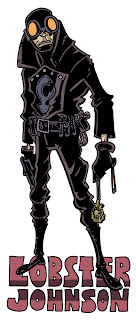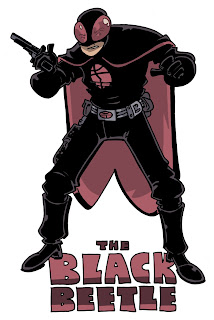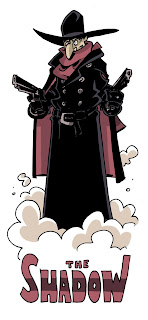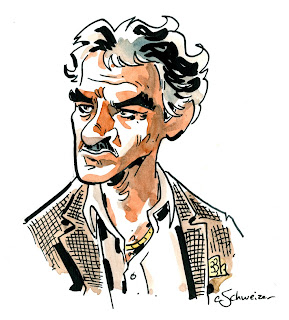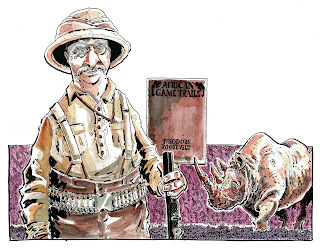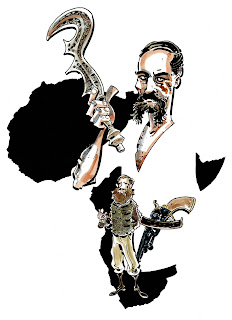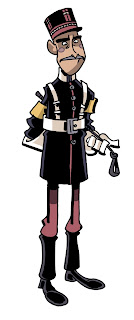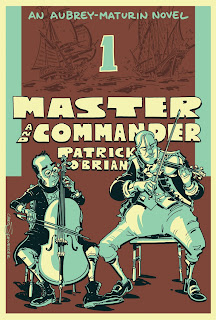![]() |
| Clarissa deNederlanden |
Now that the Decoder Ring Theatre radio shows have nearly all aired I thought it might be fun to get to know the actors who brought the Crogan Adventures characters to life. To that end, I'm going to be running a series of actor spotlights, starting with Clarissa derNederlanden, the voice behind the title character of "The Heart of Mabel Cottonshot."
Listeners of Decoder Ring Theatre will certainly recognize Clarissa from her eighty-plus episodes of The Red Panda Adventures, in which she plays Kit Baxter, the partner (I hesitate to say sidekick) and love interest of the Red Panda. Clarissa's portrayal seesaws between humor and hardness, sass and stoicism, and can deliver emotionally patriotic monologues that hit you like a gloved fist to the solar plexus. Like a lot of listeners of the show, I'm head over heels for Kit Baxter.
When Gregg Taylor, the series' director and Clarissa's husband, passed on the cast list for this episode, I was thrilled that she'd be bringing her talents to Mabel. Of all of the characters that I've written, Mabel was hands-down the most enjoyable to work with, and knowing that she'd be in the hands of an actress whose performances I admire as much as I do Clarissa's really started the whole project off on the best possible foot.
So, Clarissa, how did you first get involved working with Decoder Ring Theatre?
Clarissa: Gregg roped me into it! Nepotism reigns (...or, rather, "reins"-in keeping with the western theme)! Although at that point we weren't yet related as Gregg and I had actually just begun seeing each other. Gregg was performing in a show in a small town named Prescott located about 3 hours outside of Toronto and as his days were largely unaccounted for, he began writing the "rebooted universe" Red Panda scripts, with the team-up of a new character called "The Flying Squirrel." I have no idea if this is true, but he says he wrote her with me in mind. As I thought these scripts most excellent, this is how he wooed me. I mean if you're going to tell me that somehow some sass-mouthing superhero sidekick is slightly inspired by me, you got me. I am in no way like Kit Baxter but she's certainly the gal I'd like to be.
You play the title character in “The Heart of Mabel Cottonshot,” which is set in the old west. Do you ever watch or read westerns?
Clarissa: I certainly did watch Westerns as a youngster. My dad loved Westerns and as I loved my dad, I loved Westerns too. I never had cable growing up, but one of the stations we received always played old Westerns on Sundays. So it might very well be that my love grew by having been afforded very few other options. The point is I love them now... golldangit. They were one of my dad's nostalgias and the older I get, the more they become my nostalgia as well.
Do you have a favorite?
Clarissa: Lonesome Dove, although now slighty dated but certainly newer than the Sunday Westerns I grew up with, is still the best material ever made for TV. I made Gregg watch it early on in our relationship to see if he was date-worthy material. He passed. Westerns are one of my 2 favourite genres, the other being Sci-Fi (which is whyFirefly is so very awesome ...also some of the best material ever made for TV).
I'm a big Lonesome Dove fan, too. When I wrote Mabel, I was basically doing my best to channel Gus McCrae, and gave her my favorite Gus tendencies: confidence, swagger, sweeping statements, and an unapologetically flirtatious bend.
Clarissa: The day of recording (after we'd already recorded a few scenes) you casually announced that you thought of Mabel as a female version of Gus McCrae. It was one of those head-hitting moments where I went "Now why didn't I think of that?!" Sometimes I'm just not that smart.
![Female Sharpshooter Mabel Cottonshot]() |
| Mabel Cottonshot |
Sorry. I figured that it wasn't my place to actively give notes on anything save for the pronunciation of archaic words, and that thoughts on character were probably out of my purview.
Clarissa: Well, I was devastated. Gus Mccrae is perhaps my favourite character of all times. In fact, because of him my son (Max) was so very close to being named "Gus." I still wish I'd named him Gus! And yet, it had not at all occurred to me to channel Gus. Not one bit. And I would have given my eye teeth to channel a female Gus McCrae! I still want a do over.
No do-overs. I like your take too much! Were you thinking of any specific person, performance, or experience when you brought the character to life? Do you have a method by which you usually approach performing a new character?
Clarissa: I did not really base Mabel on anybody in particular. Generally, when I approach a new character, I start from a place of rather broad characterization (dare I say "cliche"?) and then focus down. When only having the vocals of a character to work with, or at least having that be the only part that's translated to the audience, I've learned it's generally better not to be subtle, but rather try to find the subtle moments. I also find physicality helps immensely. The challenge is finding the physicality with limited movement available to you. It can get pretty squishy in there.
Those subtle moments are one of my favorite things about your acting. You have these broad, fun characters that become very real when dealing with matters of substance to them personally. It's as if the characters, Kit in particular, pull aside the derring-do public face and say, "look, all kidding aside, this is something I feel very strongly about." Though I didn't know you'd be playing Mabel, Gregg's scripts served as my model, as I thought about the way you play silly-to-serious when writing her bit about why she wouldn't "truck with killers." So, to me, it was kind of perfect that you were the one to deliver that performance. Okay, last question. Mabel is from Texas, or at least she claims to be. Canada's a long way from Texas... have you ever traveled that far south?
Clarissa: I have never been to Texas and always wanted to go there. I'm planning a road trip for when my kids are older (FYI Gregg). I have relatives living in Doon, Iowa and Edmonton, Alberta and my family used to travel through South Dakota and Montana when visiting both groups. Though there's not much left of the Old West, there's still some amazing history in those parts of the country. Though we took our time in traveling through those states, in the ultimate scheme of my existence I barely spent any time in South Dakota and Montana... and yet I still miss them. So much sky! Such scope!
Also, I hear there's good barbecue and tacos in Texas, two of my favourite food groups.)
________________
If you haven't yet had a chance to listen to "The Heart of Mabel Cottonshot," you can listen online or download it here. You can (and should!) also subscribe to Decoder Ring Theatre on iTunes, so that you never miss a show!




